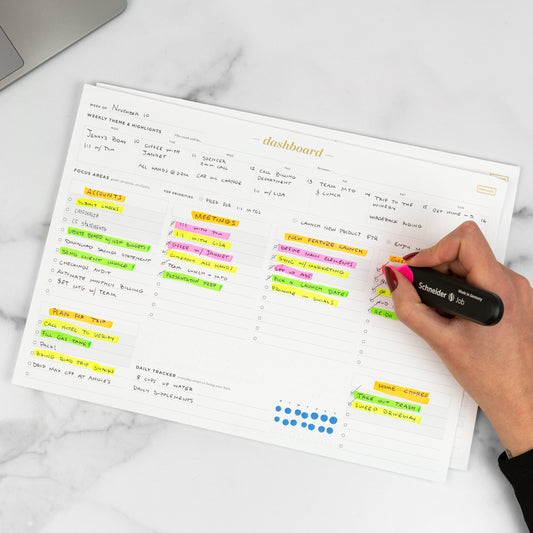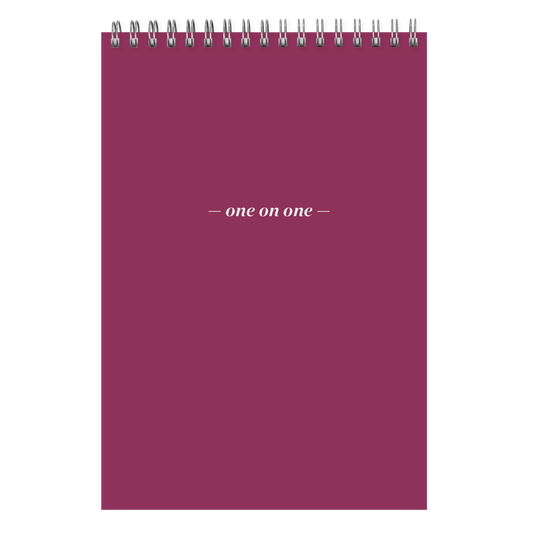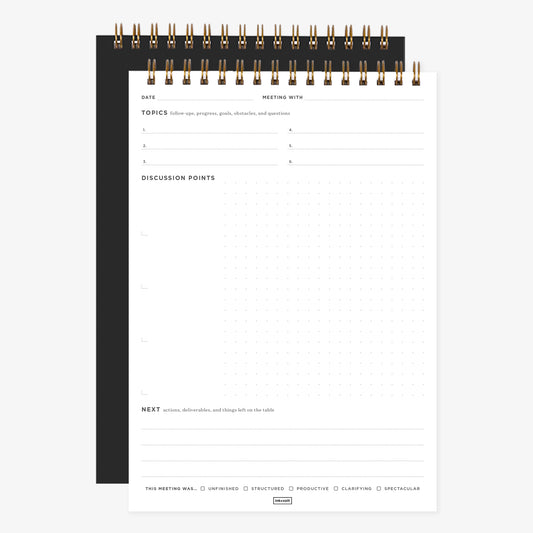There is a certain thrill in getting a hand-written note, especially in a time when emails and text messages are exchanged so frequently and easily.
There’s also a thrill in writing those notes by adding a personalized touch to let the recipient know you’re putting time and a little extra effort toward them.
Those simple acts can be really rewarding and relaxing on their own, but if you’re looking to elevate the experience even further, a fountain pen is an easy and elegant way to start. Their classic aesthetic, heavier weight compared to a more common pen, and artful writing style make fountain pens a perfect addition to your desk.
Whatever notes you decide to send or keep on your desk, here are some tips and tricks to making your fountain pen work best for you.
First, a little fountain pen history
Dipping a quill into a pot of ink was only in style for so long -- as people (and their writing) became more mobile, a new kind of writing tool came into fashion. Enter, the fountain pen.
There are several examples of patents for fountain pens, but it’s really Ma'ād al-Mu'izz who is credited with making the first pen with an ink reservoir in 973 AD. His creation didn’t really become popular until the mid-1800s, though, when several versions of the fountain pen emerged in the U.S. and in Europe.
That led to a whole variety of different fountain pens being developed — which you have available today. While all fountain pens share a basic common design, there are several factors that set each individual pen apart.
Most of what makes a fountain pen different will be in the nib, or the metal part of the pen.
Tip size: There are two options here: broad and extra fine. The broad tip shape will create a thicker writing style, whereas the extra fine creates a thin one. Tip sizes are typically labeled on the pen’s packaging or on the pen itself.
Tip shape: Nib tips come in two shape styles. You’ll likely find pens that are either italic or round, with round being the more common style. A round tip will create more even writing, but an italic tip will give you different widths depending on the direction you’re writing.
Ink-filling system: There are a lot of options here. The beginner fountain pen will likely have a cartridge system. It’s prepackaged and easy to insert.
Other types of fountain pens, however, can feature an eyedropper system — which requires you to fill the ink reservoir with an eyedropper — or a built-in system, which will also require you to find an ink supply to add yourself.
Another option is the converter system. A converter system makes it easy to put different colors into your pen, so if you want lots of options, this may be the way to go.
Weight: Today there are a variety of pen weights to choose from, so you can decide whether you want a heavier pen or something a little lighter and travel-friendly. This is completely based on preference. You can’t go wrong either way.
3 of the best fountain pens for beginners
- Lamy Al-Star Fountain Pens: These pens are lightweight and come in several colors, and are perfect for beginner fountain pen users. They have a fine steel nib that is perfect for everyday writing, so there’s very little learning curve to overcome and you’ll be on your way to beautiful fountain pen writing in no time.
- Pilot Metropolitan Collection: These pens, made by Pilot, are really easy to find (try any place you buy office supplies.) It has a classic look and the nib is made from stainless steel. They are a cartridge system, so you won’t have to mess with any ink pots.
- Cross Bailey Black Lacquer Set: If you’re feeling a little adventurous and want to try a different ink cartridge system than the traditional cartridge, there are sets that make the venture easy. The Cross Bailey set features a capped pen, two cartridges and a bottle of ink for a converter option. This pen makes it easy to dabble into the world of fountain pens without getting too overwhelmed.
So you’ve got a pen in mind, here are a few things to consider before you start writing.
There is some assembly required
Before you’re ready to write, you’ll mostly likely have to put the pen together. The ink usually comes separately.
To set your pen up, unscrew the middle part of the pen where you’d grip it. Most pens come with assembly instructions, but it’s typical that you’ll have to insert the cartridge until the sealed end is punctured, which will then allow you to start writing. Then, screw the pen back together and you’re ready to go.
There is some maintenance required
Remember to clean the pen every so often, to keep it writing clean and so you won’t have any built-up gunk. You’ll also want to make sure you store the pen correctly: keep it capped to preserve the ink, and store it either vertically (with the nib pointing up) or horizontally.
Fountain pen paper is important too
You can use your fountain pen on lots of types of paper, but if you’re looking for the best experience, try fountain pen-friendly paper. The thicker the better, to avoid bleed-through, though this isn’t a hard-and-fast rule. The grain of the paper will have some influence on your pen, so try for a paper that’s really smooth and doesn’t have a severe grain.
If you’re serious about your fountain pen writing, seek out brands that specifically make paper for fountain pens, for the best possible results.
Fountain pen tips and tricks
The most important thing to remember when using a fountain pen is that the ink is a lot thinner and therefore can be a bit messier because it doesn’t dry as fast as the ink from ballpoint pens.
- Watch where you rest your hand. This may take some getting used to, but if you make sure you’re keeping your hand from resting in the wet ink, you’ll end up with a note that isn’t smeared.
- Take it slow. Writing slowly can help you avoid a mucky piece of paper. The ink will dry more cleanly if you give it space, and this has the added benefit of giving you time to carefully consider every word you want to write.
- Don’t be afraid to experiment. Using a fountain pen should be fun and enjoyable. Don’t get caught up in everything looking perfect in the beginning. Mastering your fountain pen handwriting will take a little bit of time, so don’t be afraid to try new techniques.









